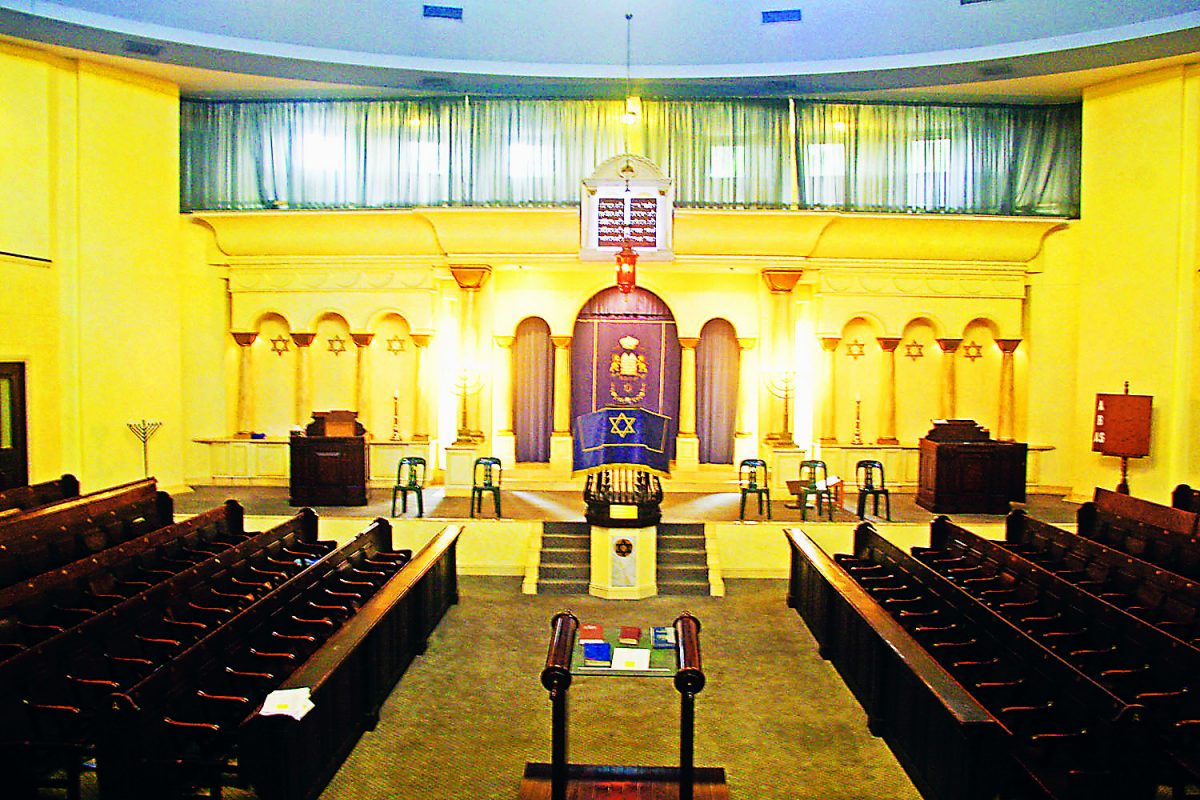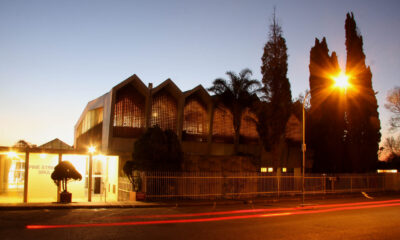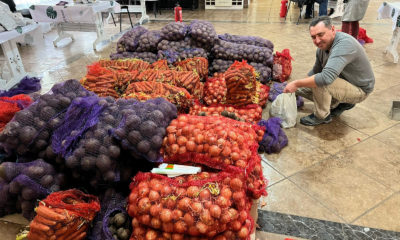
Featured Item

Shuls to reopen, but with strict conditions
Shuls, shuttered since 18 March, are to reopen this month in some provinces, but they will have to comply with strict safety protocols, says Chief Rabbi Dr Warren Goldstein.
Goldstein said in a webinar on Sunday that shuls in the Western and Eastern Cape could start reopening this month on a gradual basis once they had implemented strict medical protocols. In Gauteng, shuls could reopen from 20 August, on the basis of the same restrictions, and depending on a reassessment of infection numbers closer to the time.
In KwaZulu-Natal, currently the epicentre of infections, reopening will probably be delayed until 12 September, just before Rosh Hashanah.
“It’s safer, but not absolutely safe [to reopen shuls]” Richard Friedland, group chief executive of Netcare, told the webinar, pointing out that the statistics, though improved, are still concerning.
Goldstein said that COVID-19 infections were declining in most provinces, allowing for a cautious reopening of services. “Shuls are our most precious possession,” he said. “For months, we haven’t been able to say kaddish, hold Barmitzvahs and Batmitzvahs, and the community hasn’t been able to connect.
“The decision to close the shuls was taken in honour of pikuach nefesh [saving a life], which overrides all other mitzvahs. We have been blessed to have an outstanding medical team in Richard Friedland and [virology expert] Barry Schoub to guide us. Now, we are ready to return to shul in a phased and careful way.”
“Since we first updated the community on COVID-19 on 21 June, when there were 100 000 cases and 2 000 deaths, there have been 445 000 additional cases, and as of last night, there were more than 10 000 deaths,” Friedland said.
Schoub, emeritus professor in virology at the University of the Witwatersrand andthe former director of the National Institute for Communicable Diseases, pointed out that South Africa’s more than half a million cases of COVID-19 makes us a “global big hitter” for the disease, and there are still more than 7 500 new cases every day.
“The reported number of fatalities is [also] probably falsely low,” he said. “Based on research by the South African Medical Research Council, it’s probably two to three times that amount – about 25 000.”
Friedland said the risk measures the team took into account in reaching its decision were the average number of cases a day; the change in the active number of cases over 14 days; the number of cases per million people; the days taken to doubling the cumulative number of cases; and the reproduction (Rt) rate of the virus, which measures what stage of the pandemic we’re in.
All these measures show a positive trend, with the exception of KwaZulu-Natal. Across South Africa, including Gauteng, our most populous province, the daily number of cases and the number of active cases is in decline. Testing has also reduced – from 46 000 people a day to 30 000 people a day – and this could be a factor, but the ratio of people testing positive has declined.
The most important thing, Friedland said, is that, according to a moving average of the number of active cases in South Africa over 14 days – the so-called lag indicator – experts expect the number of cases in the country to decrease. He emphasised that there is still significant danger in KwaZulu-Natal.
“As of 19 August, it will be potentially possible for minyanim to begin in Gauteng, and in the Western and Eastern Cape,” Friedland said. “But there is still great risk. We need to exercise an abundance of caution to ensure we don’t get a second wave.”
Friedland said that a key factor in determining the risk is the Rt number (which measures the infectiousness of the disease). COVID-19’s Rt number was between 2 and 4. A number below 1, provided preventative measures are maintained, means the virus will die out. South Africa’s Rt number has come down over the past two weeks to below 1, at 0.65. However, it can rise to 4 or 5 in “superspreading conditions” like congregate environments.
“We want to prevent spikes, surges, and second waves,” he said. “That’s what happened in those places that became lax in their interventions.”
Shuls will implement more precautions than stipulated by government, said Efraim Kramer, a professor of emergency medicine and a FIFA senior medical officer, who has been appointed to draft the safety protocols for shuls in South Africa.
Kramer has visited shuls across the country to understand their needs, and the protocols are still being discussed. They will be shared with the community in due course, Goldstein said.
They include the appointment of a COVID-19 committee by every shul with clear roles and responsibilities; holding services outside if possible; compulsory mask wearing; hand sanitisation and frequent cleaning; social distancing of a minimum of two metres between people – even in shuls with fixed seating; restricting shul services to a minimum of 50 people; shul services not exceeding two hours (including on Yom Kippur); singing restricted to the ba’al tefillah (master of prayer) except for saying kaddish; no sharing of books and tallisim; no shul brochas; and mandatory screening of temperatures and collection of individual details at every service.
Kramer said that Yom Tov would require another set of protocols because it was a specific case.
Goldstein said the Union of Orthodox Synagogues (UOS) was considering innovations for bigger shuls like holding services in shifts, and repeated shofar blowing sessions.
“If a shul opens, that’s fantastic, if it doesn’t open, it’s also fantastic,” Kramer said, pointing out that there was no pressure on institutions or individuals. Vulnerable people, including those over 60, are advised to stay home.
It’s not just COVID-19 that poses risks for those returning to shul. The Community Security Organisation (CSO) and security company CAP have warned about an uptick in antisemitic content online, an ongoing terror threat, and a rise in petty crime fuelled by the weak economy.
Goldstein said an advisory team had been set up to guide the return to shul made up of medical advisors, Hatzolah, the CSO, CAP, and the UOS. “Our medical teams and community organisations are deeply inspiring. All will partner with us in our return to shul.”
“Support our shuls,” he said. “Our rabbonim are providing an amazing support service. Pay for your membership, and make donations even if you aren’t going. Shul may not feel like it usually does, but we will get through this carefully and responsibly, and will come out of it at the end.”










